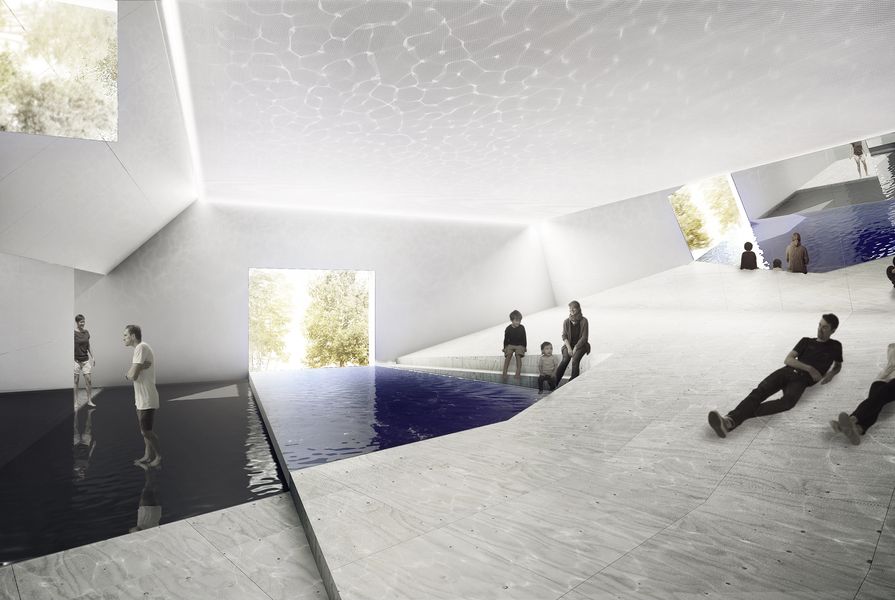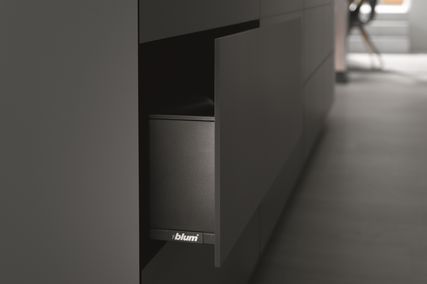Founded initially as part of the Art Biennale under Visual Arts curator Vittorio Gregotti in 1975, the first independent Biennale occurred in 1980 under the direction of Paolo Portoghesi. Now running for six months and most recently curated by Rem Koolhaas, who declared it is “about architecture not architects,” the Venice Biennale is the most prestigious and significant international architecture event.
The new Australian Pavilion at the Giardini in Venice by Denton Corker Marshall.
Image: John Gollings
Selecting the creative directors for the Australian entry to the 2016 Venice Architecture Biennale is a daunting task, not the least because this will be the first in Denton Corker Marshall’s recently completed, competition-winning Pavilion. Twenty teams responded to the Institute’s invitation, embodying a wide range of creative and intellectual positions on architecture, culture and design issues. The selection panel was seeking enthusiastic and talented teams to respond to criteria including the power of a proposition to engage a largely professional yet diverse audience, and a concept revealing what is distinctive about an Australian perspective on architecture at this time. Of particular interest was how to celebrate and amplify the presence of the new pavilion within the Giardini while staging an exhibition suitable to travel post-Venice.
After much debate the panel selected five diverse propositions for further development. These were announced recently and included: a digitally-based exploration of the extensive reach of Australian architects internationally; an overview and historical account of Australian architecture from pre-European settlement to present times mapping issues of identity; an investigation of the significance, role and influence of the pool in Australian architecture, landscape and society through a sensorial experience; an intensive revelation of issues of equity and inclusion facing the profession and its future through human stories; and a highly tactile exhibition of the incidental outputs and artefacts of architectural production collected from across Australia revealing architectural knowledge and processes of making.
The second round submissions provided participants an opportunity to dig deeper and refine their thinking. Thus the selection panel was privileged to be immersed in the imagination and intelligence of this wide range of designers and creative thinkers.
Through reflecting on the richness of ideas explored in this discourse and accompanying submissions, and considering the success of previous local and international entries, the panel was able to progressively understand the essential qualities that the event and exhibition demand to sustain the Biennale period and beyond. Many relevant questions arose. How to balance the vitality of the Vernissage event with the more passive extended period to follow? How to explore and convey the distinctiveness of our land, our culture, our people, and our thinking at a time when we tend towards universality? How to give insights to and represent the profession and its people? What is the best balance between theoretical interests, contemporary issues, politics and illustration through projects? How best to convey ideas and preoccupations yet provide a compelling and memorable experience through the means of architecture?
Difficult choices have to be made, as the panel was deeply impressed by a number of the submissions that promised to deliver stimulating experiences or worthy exhibitions in their own right. Ultimately the panel was persuaded by the vitality and perceptiveness of The Pool proposal led by Aileen Sage Architects (Amelia Holliday and Isabelle Toland) and Michelle Tabet.
The Pool by Aileen Sage and Michelle Tabet.
Significantly, the creative direction is provided by a cross-disciplinary design team comprising young women celebrating “youth, talent and identity.” An incisive interest in the connections between landscape, culture and architecture as observed through the frame of a singular architectural and landscape typology provides clarity and focus to the exhibition. The proposition suggests the pool “is an architectural form, a memory, a setting. It is a suggestion, a reflection, a place, a repository and an inspiration … It is the lifeblood of civilizations, an enabler of urbanization and embedded in the collective memory of the Australian psyche.”
Fittingly for this first Biennale in the Denton Corker Marshall Pavilion, this immersive installation provides an architectural overlay, amplifying the spatial experience and the connection to the adjacent canal. The pool is celebrated as a democratic, social and sacred place through not only the time-honored essence of experiential architecture in the manipulation of light and space, but in the layers of content provided through pairing projects and analysing their meaning and significance in the Australian context. Eight themes will give focus to this exploration of notions, concepts and places. These will be enriched by essays, stories and virtual tours by the authors of selected projects. In the words of the team: “The demolition of the old temporary structure and opening of the new permanent pavilion is an opportunity to explore the tension between our traditional landscape-based dreaming and our highly urbanized reality – a binary and embedded condition. The pool is a lens to explore how Australian architecture is responding to this shifting understanding.”
As a consequence of timing the content will be adapted as appropriate following the announcement of the overall curator and subject for the 2016 Architecture Biennale. It is an exciting prospect to further enrich the freshness, potency and robustness of this proposition, which promises a multi-layered and compelling experience for visitors to the new Australian Pavilion.
See all the shortlisted proposals here.
Ken Maher is a member of the selection panel and the Institute’s 2015 Venice Biennale Committee.




















